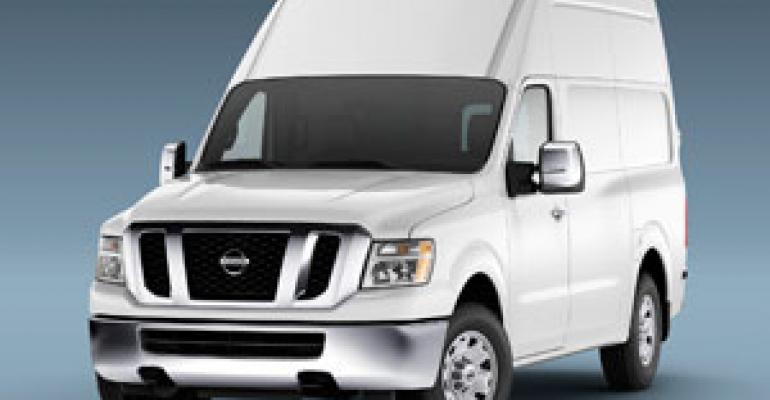
Nissan’s NV large commercial van, which launched in the U.S. this spring, is struggling to gain ground.
The vehicle, which is equipped with a V-6 or V-8 gasoline engine and offers standard- and high-roof configurations, had a 205 days’ supply at the end of September, second only to the defunct Dodge Viper’s 304 days of inventory, WardsAuto data shows.
NV inventory is almost double the GMC Savana cargo van’s 116 days and more than four times the Mercedes-Benz Sprinter’s 48.
The leading players in the cargo-van part of the segment, the Ford Econoline and Chevrolet Express posted 73- and 69-day supplies, respectively, at the end of last month.
The NV has exceeded 200 day’s supply in most months since its debut, with the exception of July (187) and August (195).
Total NV sales through the year’s first nine months were 3,035, compared with 69,187 for the Econoline and 42,084 for the Express cargo vans.
Nissan sold 24 NVs a day in September, compared with the Econoline’s 266 units, according to WardsAuto data.
The auto maker did its homework in researching the segment before developing the NV, finding buyers were dissatisfied with existing commercial vans. Even though the NV addresses many of their complaints, Nissan knew it had a formidable challenge in entering the commercial-van fray.

”We have very high expectations for (our van), but realistically Nissan is not the leader in any (vehicle) segment,” Cristi Brown, NV senior marketing manager, told the media at a Detroit event for the van last year.
Going up against a commercial segment dominated by established players such as Ford and General Motors, one industry analyst agrees, is no easy task.
For commercial-van owners, “the first thing that comes to mind is not a Nissan,” says Chris Brady, president-Commercial Motor Vehicle Consulting. “The Nissan brand is not considered to be a commercial brand.”
But Kenny Vieth, president and senior analyst for Americas Commercial Transportation Research, notes the Nissan name was represented in commercial vehicles, albeit in medium- and heavy-duty classes, by the former Nissan Diesel subsidiary. The company was purchased by Volvo in 2007 and became UD Trucks in 2010.
The most successful recent challenger to Ford’s and GM’s commercial-van dominance is the Mercedes-Benz Sprinter. The U.S.-built van initially went on sale in the U.S. in 2003 under the Dodge brand and by 2004 had achieved 10,000 sales annually, WardsAuto data shows. Through September, Sprinter deliveries stood at 12,452 units, up 121.3% from year-ago.
Brady says the Sprinter has the advantage of a commercial distribution channel, which the NV lacks. But the Daimler van originally was sold through Dodge dealers, similarly to the NV, which is sold at Nissan’s U.S. stores. The Sprinter also was and still is available through Daimler’s Freightliner commercial-vehicle manufacturing and retail arm.
Once a sleepy segment, commercial vans suddenly are booming, with auto makers planning millions in investments.
WardsAuto first reported in July that Chrysler was considering importing two Fiat fullsize vans to the U.S., the Fiat Doblo and either the Fiat Ducato or Iveco Daily. Recent comments by Chrysler officials point to the Daily coming to the U.S. in 2012.
Ford last week confirmed plans to build its European-market Transit large van in Kansas City, MO, with a North America launch slated for 2013. The auto maker will spend $1.1 billion to retool the Kansas City plant for the Transit, which will supplement the Econoline.
Nissan is ready for the competition with more products in its CV pipeline. The details will be revealed at a Nov. 8 news conference.
The auto maker already has said a passenger version of the NV will arrive next spring. A smaller, shuttle van, the NV200, will debut in 2013 for the New York City Taxi and Limousine Commission’s fleet.





